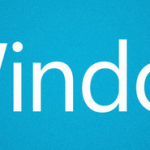After removing a disk from storage pool of Windows Storage Spaces, the physical disk is unable to be recognized by Disk Management module of Windows operating system, including the Windows 10 system. If the disk drive is a removable USB disk drive, the issue happens despite the connected external disk can be detected by the Windows operating system and showed the disk in “Safely Remove Hardware and Eject Media” listing in notification area (system tray), albeit without a drive letter.
In addition, when running the “Get-PhysicalDisk” to retrieve the status information of the physical disk drives attached to the computer, the problematic disk’s operational status is shown as “Starting” or “Starting, OK”, the health status is “unknown”, with “unknown” size and “unspecified” media type.
As the disk is not appearing in Disk Management, so it’s impossible to re-initialize the disk or re-format the disk. And you can’t even add it back to Storage Spaces pool as it’s not showing up in Storage Spaces too. However, the disk does appear in Device Manager, but disabling or removing the disk drive device does not make the disk appears.
The issue normally happens when some corruption in Storage Spaces data occurred on the disk. The solution is resetting the disk. To do so, follow these steps:
- Open PowerShell window as Administrator (normally accessible from Win-X menu if you don’t replace PowerShell with Command Prompt).
- Run the following command to get a list of all your physical disks with their friendly name, unique ID, serial number, media type, size and etc.:
Get-PhysicalDisk
- Locate the disk that is missing in Disk Management, which normally has abnormal status.
- Reset the problematic disk by FriendlyName or by UniqueId:Reset a physical disk will wipe and erase all data on the disk.
Reset-PhysicalDisk -UniqueId "abcdefgh12345678"
Reset-PhysicalDisk -FriendlyName "physical-disk-name"
Replace the value for UniqueID or FriendlyName with actual unique ID or friendly name shown in step above.
Make sure that you identify the correct disk and enter the correct Unique ID or Friendly Name, as the command will wipe the whole disk drive. If there are multiple disks using the same friendly name, then you must use unique ID.NoteIf you have multiple disks that need to be reset, and all of them has the same health status as unknown, you can use the following script to automate the reset process:$physicalDisks = (Get-PhysicalDisk -HealthStatus Unknown)
foreach ($item in $physicalDisks)
{
Reset-PhysicalDisk -UniqueId $item.UniqueId
}
Once a missing disk is reset, it should be able to be picked up and scanned by Disk Management, where you can proceed to initiate the disk and create volumes.






